Projects
Men of the Museum 1869-1927Project Editor: Robert Kilts, History 470: Digital History, Spring 2008
What is a Museum?
There is often some confusion between the building where a museum is located and the
museum itself. A museum is where artifacts are presented for public education,
enlightenment, and entertainment. These artifacts together give the public a window
into the science, technology, and history. A museum also functions as storage and
care of artifacts in their collections not currently on display. In this way, museums
act as a public trust, preserving elements of science and history so that future
generations may have links to aid understanding the past. Finally, museums make their
collections available to academic research, so that students and professional
researchers may observe and relate these materials into the greater understanding of
the past. The results of these observations often yield academic writings to be
shared with other researchers who lack access to a specific collection. This research
also permits the museum to construct informative exhibits so the public may gain
greater education and understanding from their museum visits.
The Nebraska University Museum of Natural Science began as a collection for students
of natural science to learn their subject. Over years of dedication and hard work,
the initial collection expanded into the current museum based out of Morrill Hall on
the city campus of the University of Nebraska in Lincoln, Nebraska. While many people
devoted themselves to the creation of the current museum, five men of the Nebraska
University can be seen as pivotal actors in the history of the museum.
In University Hall 1871-1888
In the first meeting of the Nebraska University Board of Regents, the need for a
comprehensive type collection of animals, minerals, and plants was considered to be
so important that they allocated four percent of their modest budget to the
acquisition and maintenance of their collection (Schultz, 45). As this was considered
to be central to the study of natural science, the first professor of natural
science, Samuel Aughey, was given charge of the collection. From 1871 to 1885, Aughey
added to this initial collection at a phenomenal rate. He was known best for his
enthusiasm, and less for his adherence to strict scientific guidelines. With all the
responsibilities placed on him between teaching students and answering the questions
from the public, it is not surprising that careful cataloguing of his staggering
array of flowing plants and minerals fell behind the collecting (Nicholson, 309-312).

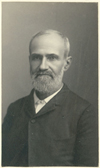
The first home for the collection was in the multi-purpose University Hall, which
also housed classrooms, administrative offices, and the university library.
Descriptions from the era soon noted the overflow of the collection spreading into
adjacent hallways and classrooms.
In 1885, Samuel Aughey resigned from the Nebraska University for reasons of health,
most likely due to spending so many years struggling to do too much work for too many
people (Myers,316).
In 1884, responsibility for the cabinet was shared between two professors following a
division of natural science into Geology and Allied Sciences and Botany and
Horticulture. Lewis E. Hicks and Charles E. Bessey divided their time between adding
their own elements to the collection and struggling to catalogue Aughey's additions.
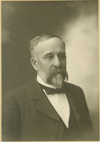
In Nebraska Hall 1888-1908
Growth of the collections as well as growth of enrollment called for new buildings at
the Nebraska University. A new building was called for, and in 1888, the collection
moved into the newly-constructed Nebraska Hall. In addition to housing classrooms and
offices, the collection spanned portions of three floors as well as portions being
related to agriculture moving to the agricultural experiment station off campus
(Schultz, 45).

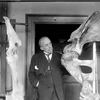
Erwin H. Barbour came to Nebraska University in 1891, with a doctorate from Yale and
a dedication to paleontology. He acted as the director for the collection from his
arrival, receiving official status in 1893 when he was also assigned the position as
State Geologist as an element of his position as Chairman of the Department of
Geology. Barbour was well known for his field work, actually conducting his first
field investigations during the summer of 1891 before ever teaching his first class.
Of course, extensive field work led directly to even more additions to the
collection, and Nebraska Hall was simply not sufficient space for all the needs
(Schultz, 48). Barbour also held a passion for museums to display collections. In his
work, he found a kindred spirit and lifelong friend in Regent Charles Morrill.
Barbour's most famous additions to the collection also increased the pressures of
space. Ancient Nebraska was home to many forms of mammoths and mastodons, and soon
the collection boasted of the largest collection of their fossils in the United
States (Myers, 327-329).
In Nebraska Hall 1888-1908
A new building was needed again. Morrill, both Regent and major contributor to the
university, lobbied powerfully on behalf of a new museum building, consulting often
with his friend Barbour both in person and in writing.
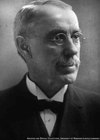
The Museum Building was completed in 1908, assigned to hold both the museum
collections and Barbour's Department of Geology. As ever, though, the collections
were growing, the student body was expanding, and even this building was smaller than
the requirements placed on it. It had never been considered completed; merely a wing
of the future building, but the additional construction was never scheduled.
Supposedly fireproof, portions of the building were damaged by fire in 1912,
requiring the cleaning and replacement of many glass cases and exhibits. A wooden
stairwell destroyed by the fire was replaced by iron, and the building continued to
serve the needs of the museum.
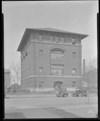
In 1924, Barbour and Morrill began a new campaign to have a new building constructed
for the museum, specifically centered on the needs for public display, rather than on
a collection and museum dedicated to student use. Barbour reported to the Regents
that three to four times as much material [as was housed in the Museum Building] was
stored in attics, cellars, steam tunnels [all on campus] and downtown storerooms.
Morrill was already retired, but wielded incredible respect and power through
politicians and the university Regents Council. He was personally providing funding
and political pressure in support of the university, including funding Barbour's
expeditions, support for collections in the museum, and even funds for student loans
for impoverished but dedicated students.
The university construction budget was the greatest obstacle, and within that budget
their greatest opponent for construction funds was the Athletic Department. Despite
having recently added Memorial Stadium in 1923, the Athletic Department needed an
all-weather gymnasium. In 1925, construction of the Coliseum won over construction of
a new museum building. Morrill was not prepared to surrender so easily. On May 1,
1925, he wrote to Barbour that he would be willing to use all the influence at his
command. I wrote the Chancellor that in case nothing was done toward erecting a
building from the present available funds, I serve notice that I should not consider
myself under any further obligation to assist in University work and upbuilding.
While he softened the blow by explaining his dedication to Museum creation and
expansion for thirty-five years, the threat was clear. Without a museum, one of
Nebraska University's premier supporters would remove himself, his influence, and his
funding.
Their efforts were not in vain. By June 16, 1925, Morrill was writing to Barbour to
congratulate him on his upcoming $350,000-plus museum. Through his ongoing influence,
and despite his steadily failing health, Morrill ensured that Barbour was part of
every step of planning the new museum building from the grounds to the design, and to
the inclusion of modern lighting and exhibits. In April, 1926, Morrill wrote to the
Chancellor detailing his inclusion of the university in his will as an equal partner
with his children, and how this money was to be used for the future of the new Museum
and the collections (Morrill Letter, 1925).
In Morrill Hall 1927-present
Charles Morrill was unable to stand and deliver his own message at the May 28, 1927
dedication, so his son, Arthur Morrill, read a letter he prepared for the occasion.
Morrill Hall bears his family name, built from a small collection into a true museum
designed from the ground to be a public display of the history of Nebraska and
Nebraska's natural science.

While the Museum has spread to additional locations around Lincoln, Morrill Hall
remains the public contact point, and every year thousands of school children visit
on field trips from communities all over Nebraska. Few children in Nebraska have not
had the joy of a visit to "Elephant Hall."
Works CitedMyers, Thomas P.. "Growth of a Natural
History Museum on the Prairie: the University of Nebraska State Museum,
1871-1996." Great Plains Research.7 (1997): 315-345. Lincoln, Nebraska. Nicholson, Thomas D.. "The University of
Nebraska State Museum--A Century of Growth." Curator.XIV
4(1971): 308-324. Lincoln, Nebraska: December
1958. Schultz, C. Bertrand. "1971--The Museum's
Centennial Year." University of Nebraska News Museum
Notes.50
45(1971).Lincoln,
Nebraska: March, 1971.
|

